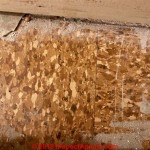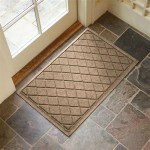Vinyl plank flooring is an increasingly popular and attractive flooring material for both residential and commercial applications. It is a low-cost, durable, and easy to install option that can provide a great look for any space. However, proper installation is critical to ensure the longevity of your flooring and to maximize its effectiveness.
Choosing the Right Subfloor
The first step in laying vinyl plank flooring is to choose the right subfloor. Vinyl plank flooring can be installed over most existing floors, but it must be installed over an even, flat, and dry surface. If the subfloor is not even, the planks may not fit together properly and can cause the flooring to shift or buckle. In some cases, it may be necessary to level the subfloor with a self-leveling compound before installation.
Acclimating the Flooring
Vinyl plank flooring should be allowed to acclimate to the room for at least 48 hours prior to installation. This will allow the planks to adjust to the temperature and humidity of the room, which can help prevent warping or buckling due to changes in temperature or humidity after installation.
Measuring and Cutting
Once the subfloor is prepared and the flooring is acclimated, it is time to begin the installation process. Start by measuring the room and cutting the planks to the appropriate size. It is important to make sure that the planks are cut to the same size, so they fit together properly. Additionally, it is important to make sure that the planks are facing the right direction. This will ensure that the pattern created by the planks is even and uniform.
Laying the Planks
Once the planks are cut to size, it is important to lay them out properly. Start in the corner of the room and work your way out. Make sure that the planks are tight against each other and that the pattern is uniform across the entire floor. If any planks are too tight, use a tapping block to tap them into place.
Adhesive and Seams
Adhesive should be used in areas where extra stability is needed. This includes areas with high traffic or in areas where the planks may be exposed to moisture. Additionally, seams should be sealed with a vinyl seam sealer to ensure that no moisture can penetrate the seams. This will help to prevent warping or buckling due to moisture.
Conclusion
Vinyl plank flooring is a great option for many homes and businesses. However, it is important to ensure that it is installed properly in order to maximize its effectiveness and ensure its longevity. By following the steps outlined above, you can ensure that your vinyl plank flooring is installed correctly and looks great for years to come.








:max_bytes(150000):strip_icc()/easy-install-plank-vinyl-flooring-1822808-09-a1f83db7bdf74f279f45594b897de82d.jpg)





Related Posts








